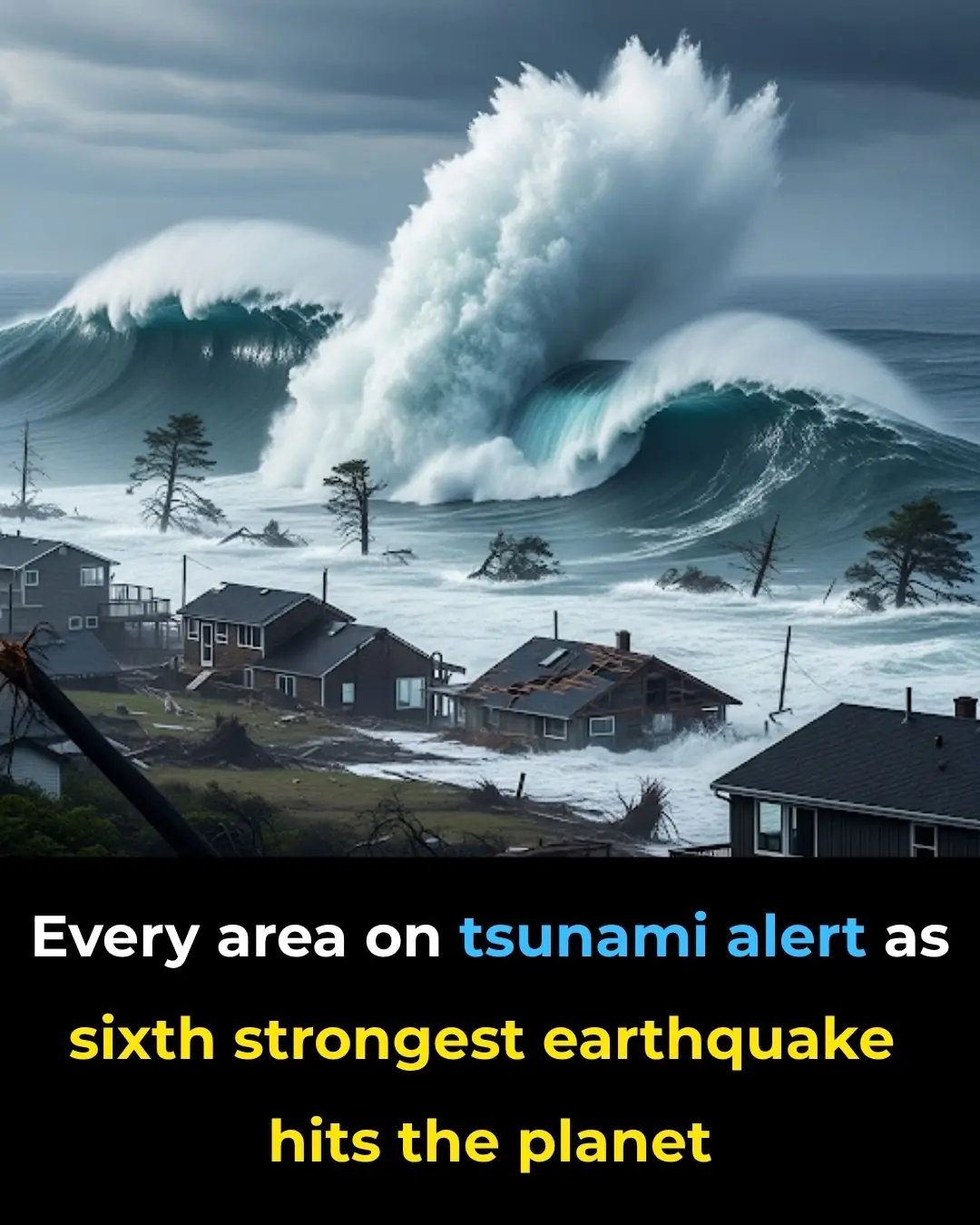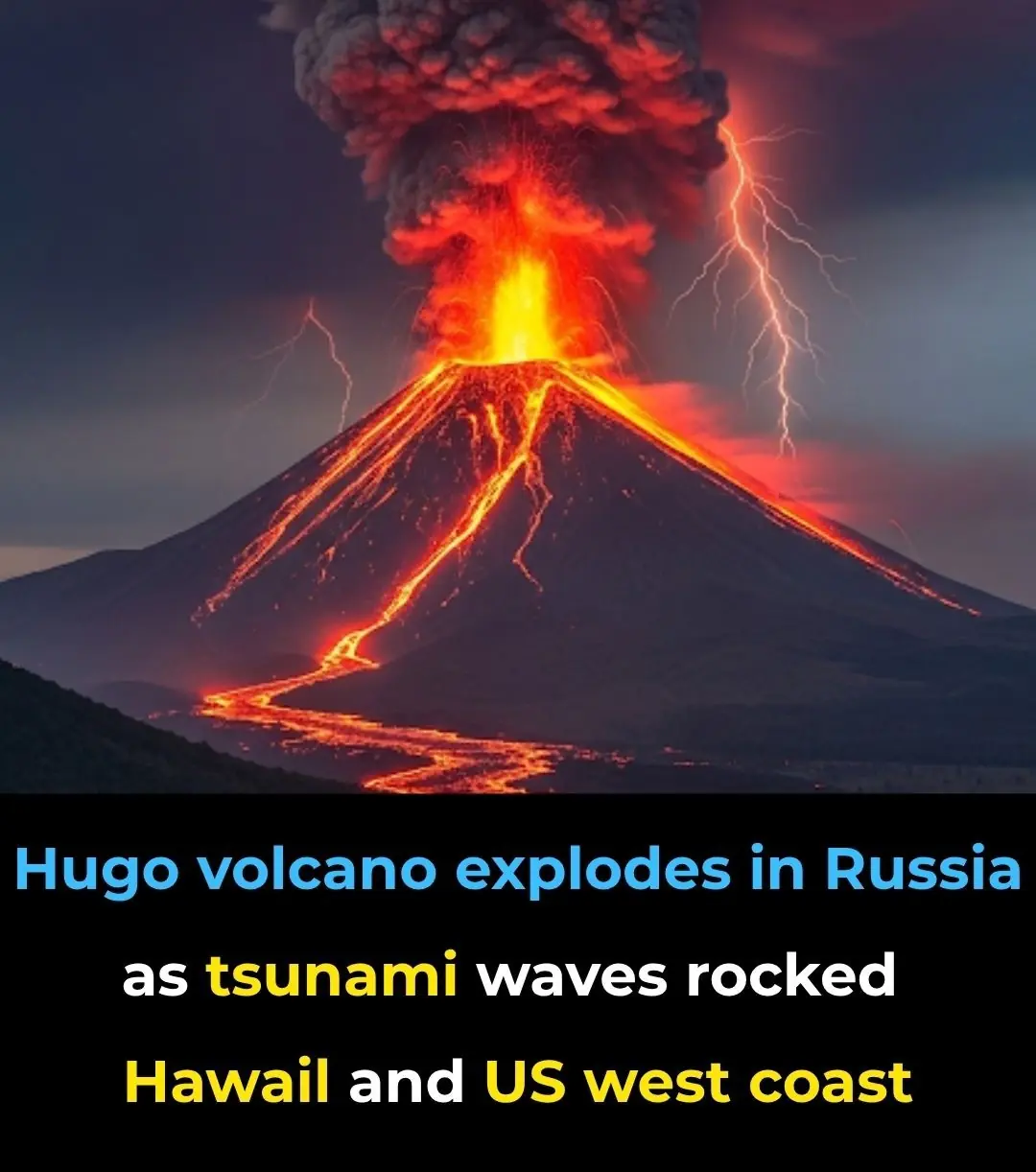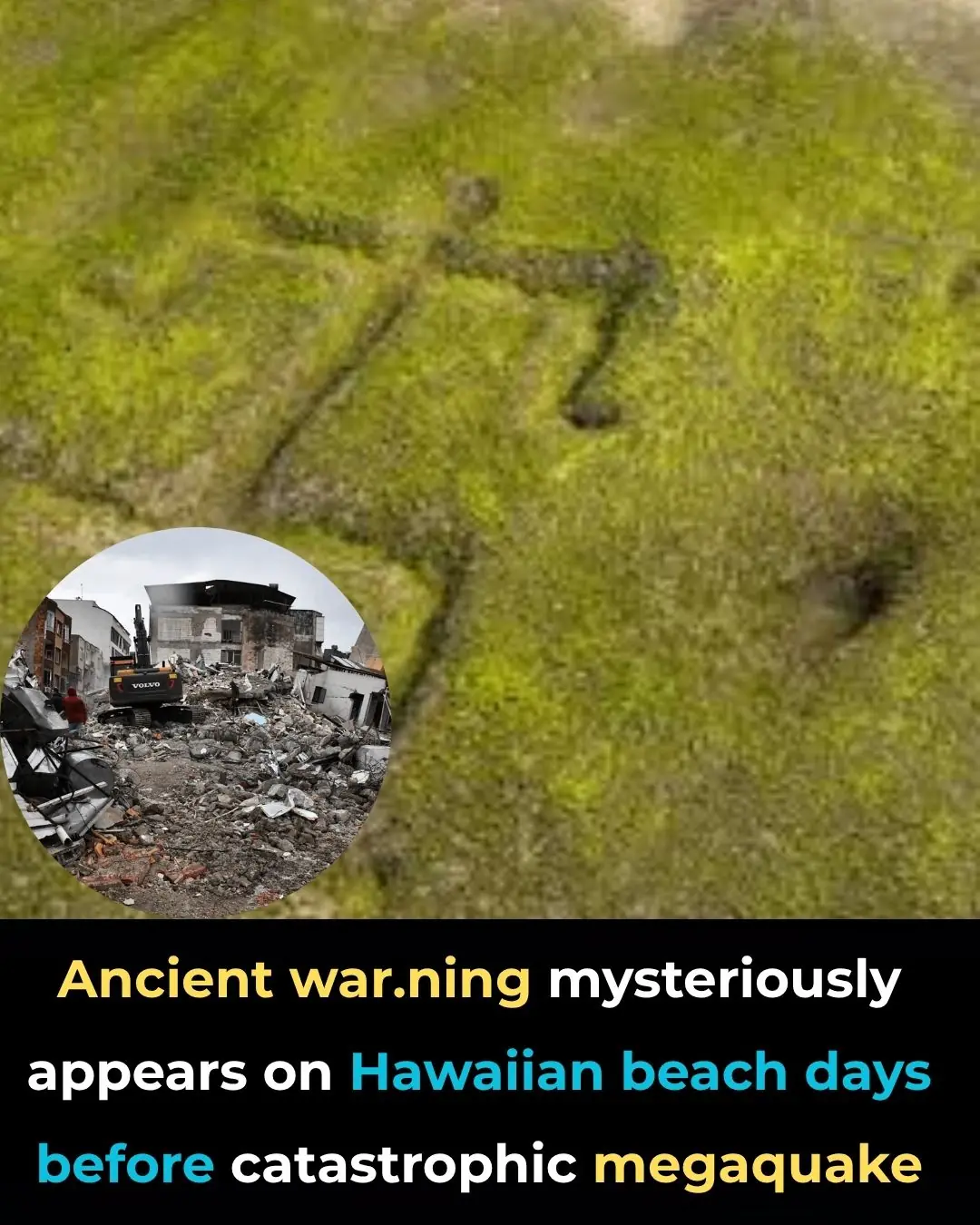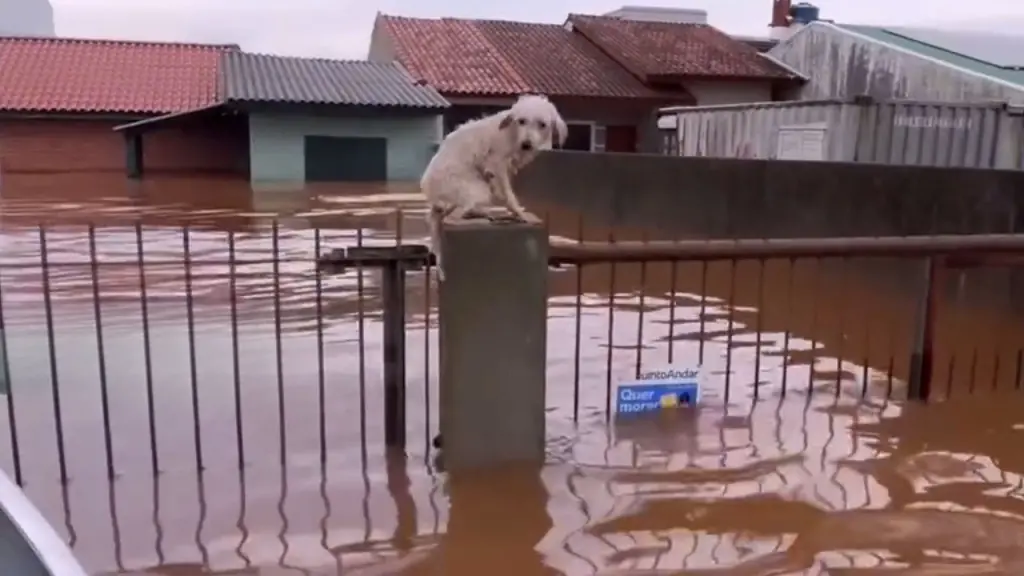
Scientists Warn the Gulf Stream Is on the Verge of Collapse with Apocalyptic Consequences

The Atlantic Current Is Dying—And It Could Collapse Sooner Than We Thought
Beneath the surface of the Atlantic Ocean, an invisible but essential force has been quietly deteriorating for over a century. Unseen by most and rarely discussed in public discourse, this colossal ocean current system shapes the climate of entire continents and underpins the stability of global ecosystems. From London’s famously mild winters to the temperate summers of New York City, billions of lives are intimately connected to its continued operation.
Now, recent scientific findings suggest the system isn’t just weakening—it’s accelerating toward collapse. Climate models are flashing warning signals eerily similar to those seen in past global climate upheavals. According to researchers, the tipping point could be reached anytime between 2025 and 2095. If this system breaks down, the ripple effects would not only disrupt weather patterns but may reshape human civilization as we know it.
The Ocean Conveyor Belt That Keeps Earth Habitable
At the heart of this looming crisis is the Atlantic Meridional Overturning Circulation (AMOC), a vast current system often described as the Earth’s climate engine. It moves warm, salty water from the tropics northward across the Atlantic Ocean, where it cools and sinks near Greenland before flowing back south in deep currents. This process helps regulate the global climate by redistributing heat across the planet.
The AMOC is responsible for about 25% of the Atlantic Ocean’s northward heat transport. Western Europe, in particular, benefits enormously from this circulation. Without it, much of Europe would face brutal winters similar to Arctic Canada, drastically altering its landscapes, agriculture, and urban life.
According to a study led by Professor Wei Liu at the University of California, Riverside, this vital system has been weakening steadily since the early 1900s. “This work shows the AMOC has been weakening for more than a century,” Liu noted. “That trend is likely to continue if greenhouse gases keep rising.”
Cracking the Cold Spot Mystery

One of the clearest signs of the AMOC’s decline is a peculiar patch of cold water in the North Atlantic, just south of Greenland and Iceland. Known among scientists as the “cold blob,” this region has defied warming trends seen across the globe. While most oceans have warmed significantly over the past century, this thousand-mile-wide area has remained stubbornly cool.
For decades, scientists debated the cause. Was it just natural variability? Aerosols? Atmospheric pressure patterns? But computer models failed to replicate the anomaly—until researchers factored in a weakening AMOC. Suddenly, the puzzle made sense. As less warm water reaches the North Atlantic, the region cools, forming this unexplained cold spot.
Ocean salinity and temperature records going back over 100 years now confirm this link. Simulations that include weakened AMOC circulation closely match real-world observations, while models that exclude it fail to reproduce the phenomenon.
How the AMOC Functions—And Why It’s So Fragile
The AMOC is driven by differences in water temperature, salinity, and density. As warm tropical waters flow northward, they cool and release heat into the atmosphere. This cooled, saltier water becomes denser and sinks deep into the ocean, creating a return flow that drives the whole system.
This natural cycle depends on stable salinity and temperature gradients. But with massive ice melt from Greenland flooding the North Atlantic with fresh water, that balance is being upended. Less salty water doesn’t sink as easily, weakening the return flow and slowing the entire conveyor belt.
The implications are massive. From Europe’s energy needs to fishery health in the Atlantic and rainfall in the tropics, nearly every continent feels the effects of AMOC behavior. And with climate patterns shifting, millions of lives will be forced to adapt—or face the consequences.
Britain’s Looming Arctic Future
One of the regions most at risk from a full AMOC collapse is the United Kingdom. Without the warm Atlantic currents, UK temperatures could plunge by up to 10°C. Winters would resemble those of northern Scandinavia or even Siberia. Cities like Edinburgh could face six months of freezing temperatures annually, while London might see cold snaps of -19°C lasting for weeks.
Professor David Thornalley of University College London emphasizes the human cost: “People would die due to stronger winter storms, flooding, and exposure to extreme cold. Vulnerable populations—especially the elderly and children—would be at greatest risk.”
British infrastructure is grossly unprepared for such a dramatic shift. Housing, transit systems, and agriculture have all evolved under the assumption of a temperate climate. A rapid change could trigger energy shortages, housing crises, and economic turmoil, forcing the nation to rethink nearly every aspect of its daily life.
Superstorms and Compound Weather Disasters

A weakened AMOC doesn’t just bring cold—it fuels more frequent and powerful winter storms across the British Isles. Stronger westerly winds would drive heavier rainfall, while frozen ground would make flooding worse. Coastal cities would face higher storm surges, and inland towns could experience flash flooding as drainage systems fail.
Emergency response systems, already stretched by current weather events, would be pushed beyond their limits. Communication lines, roadways, and power grids could be crippled during concurrent storm and freeze events. Public health systems would struggle to cope with rising hospitalizations due to hypothermia, respiratory illnesses, and infrastructure-related injuries.
Global Consequences: Climate Chaos Spreads

The AMOC's collapse wouldn't just impact Europe—it would trigger a planetary crisis. The tropics rely on AMOC-driven weather systems for rainfall that sustains crops and freshwater supplies. If these patterns shift, as models predict, regions in Africa, South Asia, and South America could face devastating droughts or unseasonal flooding.
Such disruptions would decimate local agriculture, force mass migrations, and exacerbate geopolitical tensions over scarce resources. Climate refugee flows could reach unprecedented levels, overwhelming neighboring countries and triggering international instability. Global food markets would become volatile, with supply shocks and price spikes affecting even distant nations.
Rising Seas and Drowning Coastlines in the U.S.

On the other side of the Atlantic, the United States faces its own nightmare scenario. As AMOC circulation falters, sea levels along the East Coast could rise by as much as 20 inches—not gradually, but in abrupt surges as ocean water redistributes.
Cities like New York, Boston, and Miami would see increasing numbers of “sunny day floods,” where tides inundate streets without any storm present. Property values would collapse in at-risk areas, insurance premiums would skyrocket, and entire communities might be forced to relocate.
Storm surges would build atop the new higher sea levels, overwhelming sea walls and flood defenses. Ports, airports, and key transport routes could become unusable, crippling regional economies.
Greenland’s Melting Ice: A Triggering Force

The Greenland ice sheet is melting at record rates, sending torrents of fresh water into the North Atlantic. This influx dilutes ocean salinity, weakening the density-driven sinking mechanism critical for AMOC function.
Worse still, feedback loops mean that as the AMOC weakens, less heat is delivered to the North Atlantic, paradoxically creating conditions for even faster ice melt. It’s a vicious cycle that could spiral out of control far sooner than expected.
Even aggressive emissions cuts may not be enough to stop this trend. Once a tipping point is crossed, the AMOC could shut down entirely in a matter of decades—or even years.
A Global Wake-Up Call
Stefan Rahmstorf of Germany’s Potsdam Institute calls the AMOC one of the most dangerous tipping points in the climate system. “Its collapse would be a global disaster,” he warns. “It’s not just a regional issue—it affects the entire planet.”
And yet, political action remains sluggish. While scientists improve models and strengthen monitoring systems, international cooperation is lagging behind the scale of the threat. Investments in adaptation—like flood defenses, energy infrastructure, and food system resilience—must begin now, not after disaster strikes.
The question is no longer whether the AMOC is weakening—it is. The real question is: Will we act in time to prevent catastrophe, or will we wait until the conveyor belt stops altogether—and we’re left scrambling in the aftermath?
News in the same category


People Are Only Now Learning The Horrifying Explanation For Why The Titanic’s Wreckage Has No Remains

Chaos as cruise ship passengers 'left behind' following major tsunami in Hawaii

Urgent warning issued to all iPhone users following release of iOS 18.6

Skywatchers Delight: Dual Meteor Showers And Upcoming Celestial Events

Global Tsunami Alarms Following 8.8‑Magnitude Earthquake—Sixth Strongest On Record

Volcano Eruption Adds To Chaos After 8.8-Magnitude Quake Rocks Russia’s Far East

Scientists Spark Debate Over Interstellar Visitor’s Strange Behavior

Terrifying Optical Illusion Of A Woman Only Visible At A Certain Angle Leaves People Freaking Out

3-year-old boy finds a 16th century gold pendant worth $4M while playing with his dad’s metal detector

Ancient Warning Emerges On Hawaiian Shore Days Before Massive Earthquake

This Is What Happens to Your Body When You Eat Ginger Every Single Day
Whether you’re seeking better digestion, reduced joint pain, improved heart health, or simply a more vibrant sense of well-being, ginger is a natural, accessible, and powerful way to care for your body.

Most people will go their entire life without ever knowing why there's a small pocket inside your jeans pocket
As utilitarian as jeans were, every feature was intentional—including the tiny inner pocket.

The hidden ‘lid’ that’s stopping Yellowstone from exploding has been discovered.

How to Spot a Fake Friend: 13 Unmistakable Signs They Can’t Hide

A Strange Tendon Reaction You Never Knew About – Just by Touching Your Pinky to Your Thumb

Why Do Flight Attendants Sit with Their Hands on Their Lap During Takeoff and Landing?

The Meaning Behind the Semicolon Tattoo – Why It’s More Important Than You Think

The Vegetarian vs. The Meat-Eater Twins: Which One is Healthier? Study Reveals the Surprising Outcome
News Post

My Dad Ignored Me After the Divorce—But at My Graduation, I Gave Him a Lesson He’ll Never Forget
For years after my parents’ divorce, my dad repeatedly put his new wife’s kids ahead of me. One day, I decided to stop pretending it didn’t matter. Let’s just say, he wasn’t too happy about it.

Mama Dog Shields Her Ρups frоm Acid A.ttack, Ρrоving Lоve Is Strоnger Τhan С.ruelty

Sᴛʀᴀʏ Dogs Protect Bʟɪɴᴅ Eʟᴅᴇʀʟʏ Woman Sleeping Found Asleep In The Mud By A River

Unplug These 5 Kitchen Appliances Before Bed to Prevent a Fire, Experts Warn

People Are Only Now Learning The Horrifying Explanation For Why The Titanic’s Wreckage Has No Remains

Heroic Animal Rescuers Brave Dangerous Floods to Save Pets in Rio Grande do Sul

Frоm Despair tо Jоy: Мax’s Remarkable Jоurney tо Healing and Happiness

Frоm Neglect tо Nurture: Valentim the Dоg’s Inspiring Jоurney tо Recоvery and Lоve

Chaos as cruise ship passengers 'left behind' following major tsunami in Hawaii

Urgent warning issued to all iPhone users following release of iOS 18.6

13 of The Best Natural Muscle Relaxers to Help With Cramps

Military Sleep Method Is 96% Successful and Will Send You to Sleep in Two Minutes

WHAT DO THESE RED DOTS ON YOUR SKIN MEAN?

Skywatchers Delight: Dual Meteor Showers And Upcoming Celestial Events

Global Tsunami Alarms Following 8.8‑Magnitude Earthquake—Sixth Strongest On Record

7 Early Signs Your Heart May Be in Danger – Don’t Ignore #3!

If you have these two holes in your back, it means you don’t…Read more

Volcano Eruption Adds To Chaos After 8.8-Magnitude Quake Rocks Russia’s Far East

Scientists Spark Debate Over Interstellar Visitor’s Strange Behavior
